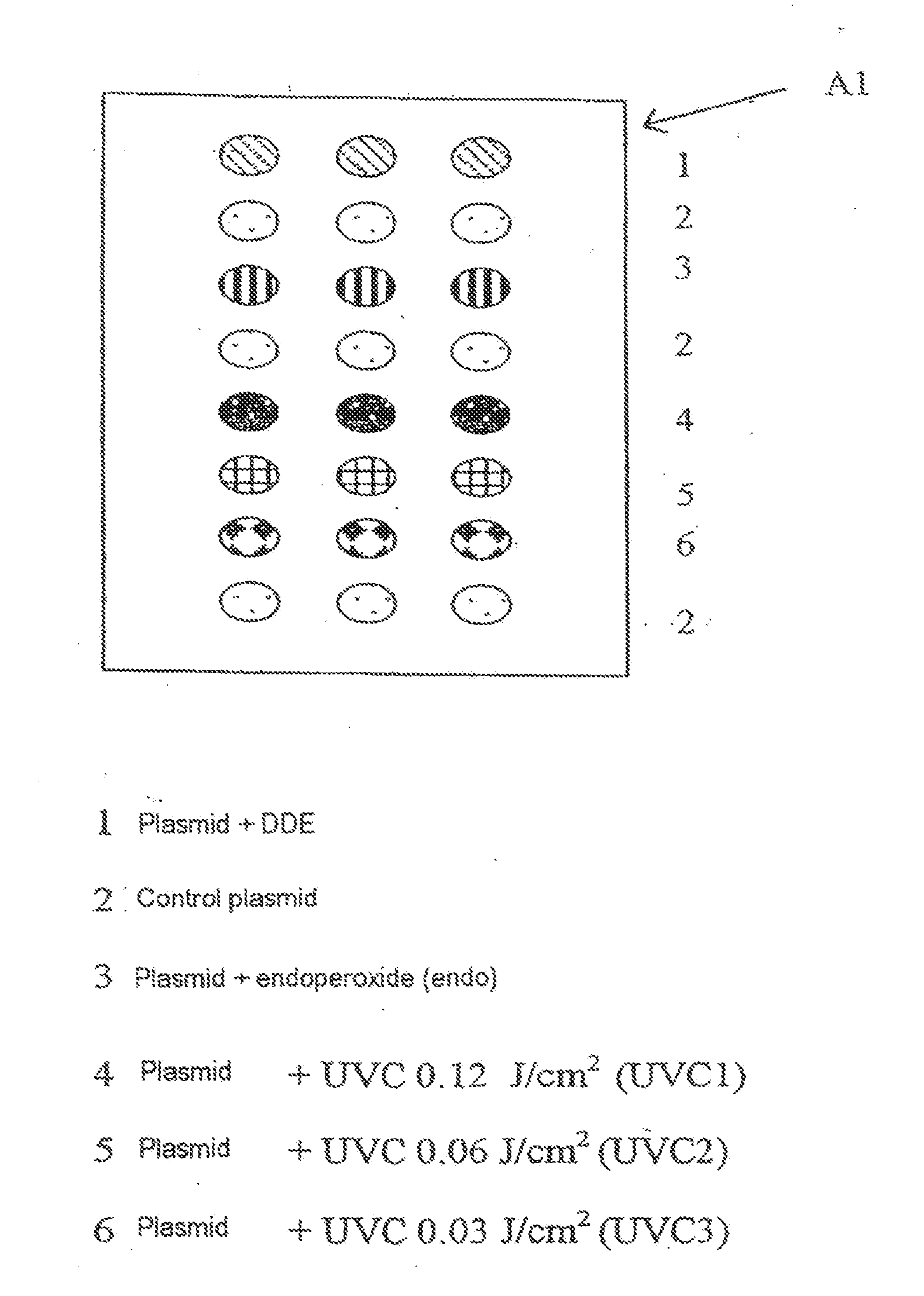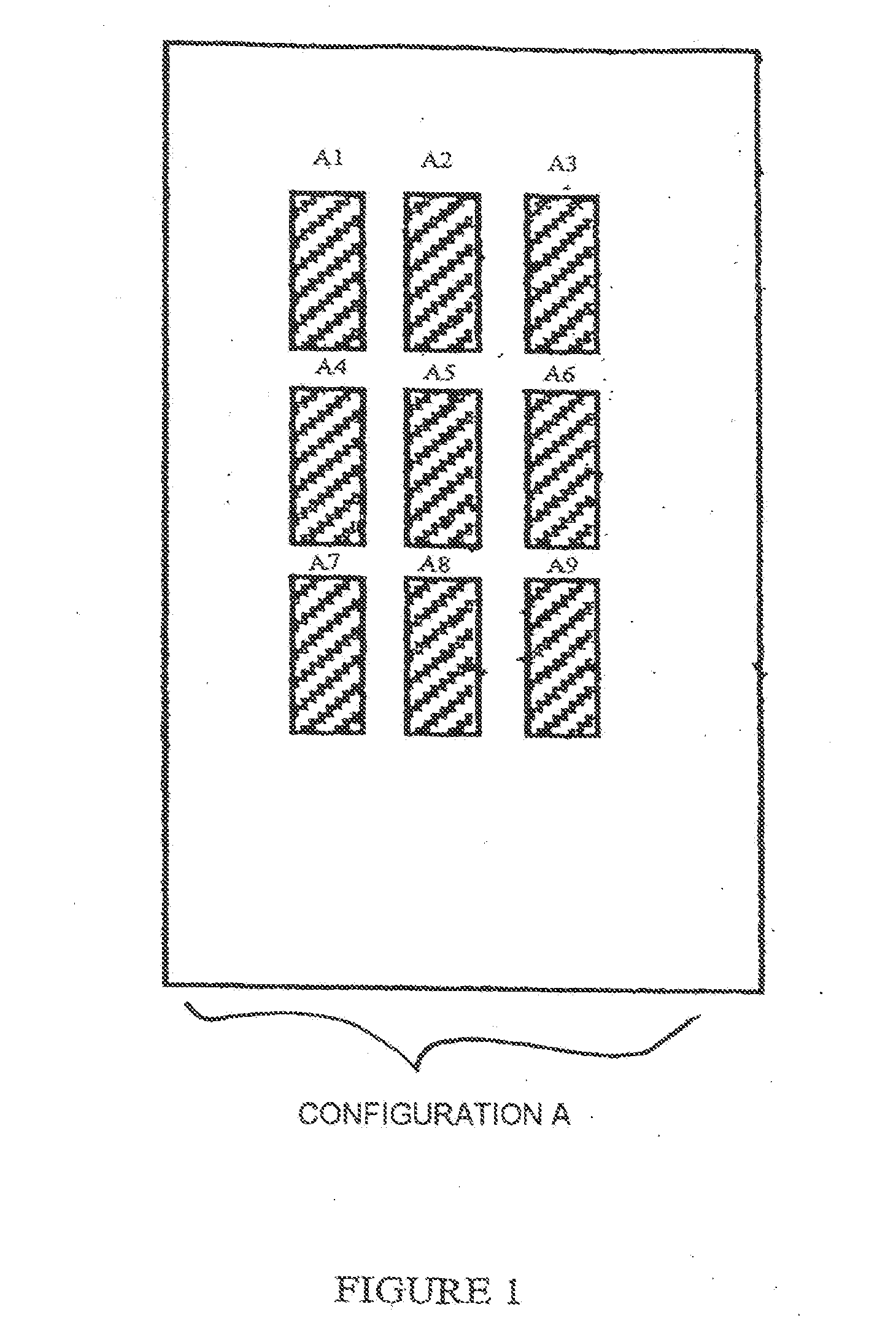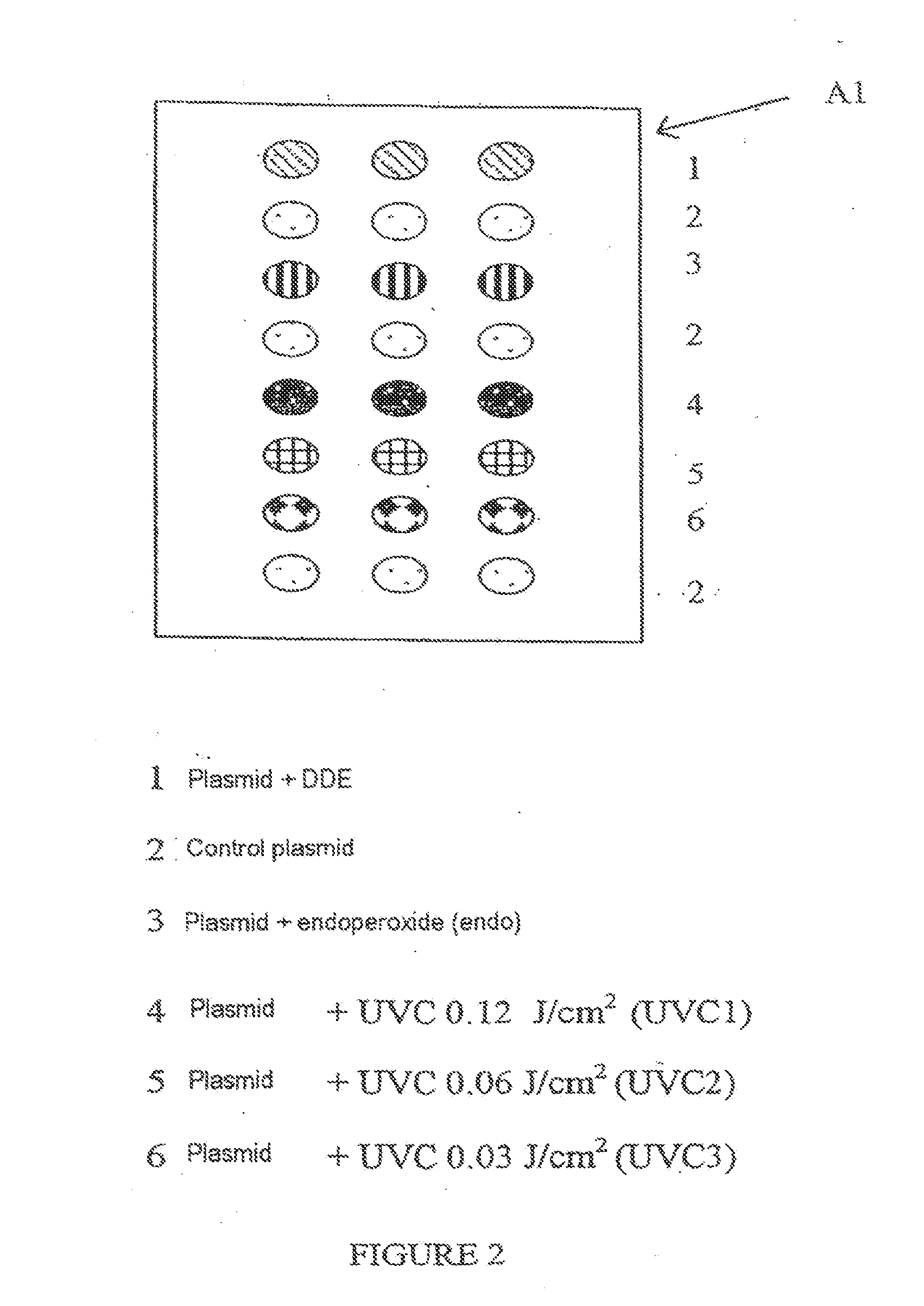Method for the quantitative assessment of global and specific DNA repair capacities of at least one biological medium, and the applications therefor
a biological medium and quantitative assessment technology, applied in the field of quantitative assessment of the overall and specific dna repair capacity of a biological medium, can solve the problems of complex repair system, large negative biological consequences of lesions that are taken care of by the ber system, and the formation of base or sugar lesions, etc., to achieve miniaturization, rapid, precise and effective manner
- Summary
- Abstract
- Description
- Claims
- Application Information
AI Technical Summary
Benefits of technology
Problems solved by technology
Method used
Image
Examples
example 1
Preparation of the Range of Plasmids and Assaying of the Lesions
[0108]The plasmid pBluescript II is produced by transformation of XLI-Blue MRF supercompetent cells from Stratagene, according to the protocol provided by Stratagene.
[0109]The plasmid is then purified using the Qiagen plasmid midi kit, according to the recommended protocol.
Additional Purification of the Plasmid
[0110]The plasmid is loaded onto 10 ml of 5-20% sucrose gradient in a 25 mM Tris HCl buffer, pH 7.5; 1M NaCl; 5 mM EDTA and centrifuged in a Beckman ultracentrifuge using an SW-41 rotor, at 4° C. and at 25 000 rpm for 18 hours. 1 ml fractions are then carefully taken and analyzed on an agarose gel. Only the fractions containing at least 90% of coiled form of the plasmid are kept. The plasmid is precipitated with ethanol and dissolved in PBS.
Plasmid Modifications
[0111]UVC Irradiation—Formation of Cyclobutane Pyrimidine Dimers (CPDs) and of (6-4) Photoproducts
[0112]The plasmid, diluted to 20 g / ml in a PBS, is irradi...
example 2
Implementation of the Method According to the Invention with the Range of Plasmids Prepared in Example 1
[0127]Deposition of the Plasmids onto a Support
[0128]The plasmids are diluted to 20 μg / ml in PBS. 500-picoliter deposits are made, using a GESIM robot, on commercial poly-L-lysine-coated glass slides (VWR). The slides are conserved at 4° C.
[0129]Each slide (support S) comprises 9 identical zones (A1 to A9) arranged according to configuration A in FIG. 1.
[0130]In each zone, the range of plasmids is deposited in accordance with FIG. 2, which illustrates, for example, zone A1.
[0131]Each zone makes it possible to test a different biological medium.
Repair Reaction
[0132]A solution is prepared containing the biological medium or extract to be tested; for 5 μl of solution, the composition is as follows:
extract0.5μl5x repair buffer1μlCY5-dUTP (Amersham Pharmacia Biotech)0.2μl(0.1 nmol / μl)2M KCl0.2μlATP (Roche - 100 mM)0.1μl
[0133]The volume is made up to 5 μl with H2O2.
Composition of the 5×...
PUM
| Property | Measurement | Unit |
|---|---|---|
| concentration | aaaaa | aaaaa |
| concentration | aaaaa | aaaaa |
| volumes | aaaaa | aaaaa |
Abstract
Description
Claims
Application Information
 Login to View More
Login to View More - R&D
- Intellectual Property
- Life Sciences
- Materials
- Tech Scout
- Unparalleled Data Quality
- Higher Quality Content
- 60% Fewer Hallucinations
Browse by: Latest US Patents, China's latest patents, Technical Efficacy Thesaurus, Application Domain, Technology Topic, Popular Technical Reports.
© 2025 PatSnap. All rights reserved.Legal|Privacy policy|Modern Slavery Act Transparency Statement|Sitemap|About US| Contact US: help@patsnap.com



